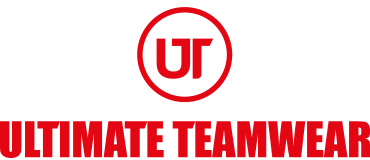
Cycling nutrition for beginners: what to eat before, during and after your ride
So, you’re a beginner looking to get into cycling. You’ve got a lot to think about: your equipment, sportswear, what to eat and when, muscle recovery and more…
When it comes to clothing, you don’t need to worry about comfort when on the ride with our custom cycling kits developed for cyclists, by cyclists. We design all of our cycling gear to maximise comfort while on the bike, and off it too.
Now you need to think about the most important aspect of fuelling your rides: nutrition.
When you’re new to cycling it can be difficult to get your head around what to eat and when, as there’s a lot of conflicting information out there.
In this blog we’ve broken down the basics of the best diet for optimal performance, as well as some recommendations for the types of food to eat before, during and after your sessions.
What is a good diet for cyclists?
As a beginner, it’s especially important to fuel your body with a balanced diet that will help you adjust to your increase in physical activity.
Making sure you’re eating the right amount of complex carbohydrates, protein along with fruit and vegetables; as well as staying hydrated, will help your energy levels and muscle recovery.
Your body will be using more calories, so you’ll need to eat more than you’re typically used to, but be careful with overcompensating with carbs.
‘Some new cyclists will overeat before an event & actually consume more calories than they expend’ says Richard Moore, leader of Yorkshire’s Squadra Racing Team. ‘Think about the distance and intensity of the ride and what the expected caloric deficit is likely to be.
To use an old analogy, you don’t need to fill the car with a full tank of fuel for an hour's drive!’
According to Cycling Weekly, a good way to estimate your additional calorie needs is to multiply the distance travelled in miles by 40-50 calories. For example, if you’ve been out for a 30-mile ride you can estimate an extra calorie need of between 1,200-1,500 calories depending on the speed at which you ride.
What to eat before cycling (and when)
What you eat before cycling, and when, will affect how quickly your body can change the food into glycogen. Giving your body time to digest heavier meals is a must.
Here are some suggested foods, which are advisable to eat three hours before riding for good digestion:
What to eat whilst cycling
Keeping up your carbohydrate levels whilst cycling is essential to avoid hitting ‘the wall’, where you feel like you can no longer continue.
Richard recommends both eating and drinking little and often, suggesting taking a short drink every 15 minutes and having a small amount of food every 30 minutes.
Some ideas of what to eat (and drink) while cycling include:
What to eat after cycling
According to Cycling Weekly, your appetite should increase above the level you are used to after the ride. The first 20 minutes after a ride is known to be the optimum refuelling period where nutrients are taken up more efficiently and transported to the muscle stores.
It’s important to look after your body after a ride, particularly as a beginner as your body adjusts. Suggestions for what to eat after a cycling session include:
In order to avoid Delayed Onset Muscle Soreness (DOMS), ensuring you have enough time to properly stretch after cycling is essential. Aim for at least 10 minutes to stretch all the muscles you have been using during the session.
What you eat afterwards is also important. ‘Foods that are high in antioxidants, like blueberries, cherries, and pomegranates, are known to help to reduce muscle soreness post-workout’ says Abbie Watkins, a qualified Personal Trainer from OriGym Centre of Excellence. ‘On the other hand, processed foods, refined sugars, and dairy products, are among a few types of food that can actually make your muscles and joints feel even worse.’
Finally, it’s important to make sure you are getting rest days in between rides - this can be up to 36-48 hours after particularly strenuous training. Abbie advises that beginners should take at least two rest days a week to avoid injury, so be sure to take it easy!
Looking for Custom Triathlon Kit?
We offer a wide range of high quality custom triathlon clothing. We use the best fabrics and the latest printing techniques to help create your clubs kit in the style you should be seen!
Make sure you look the part when flying past the competition.
